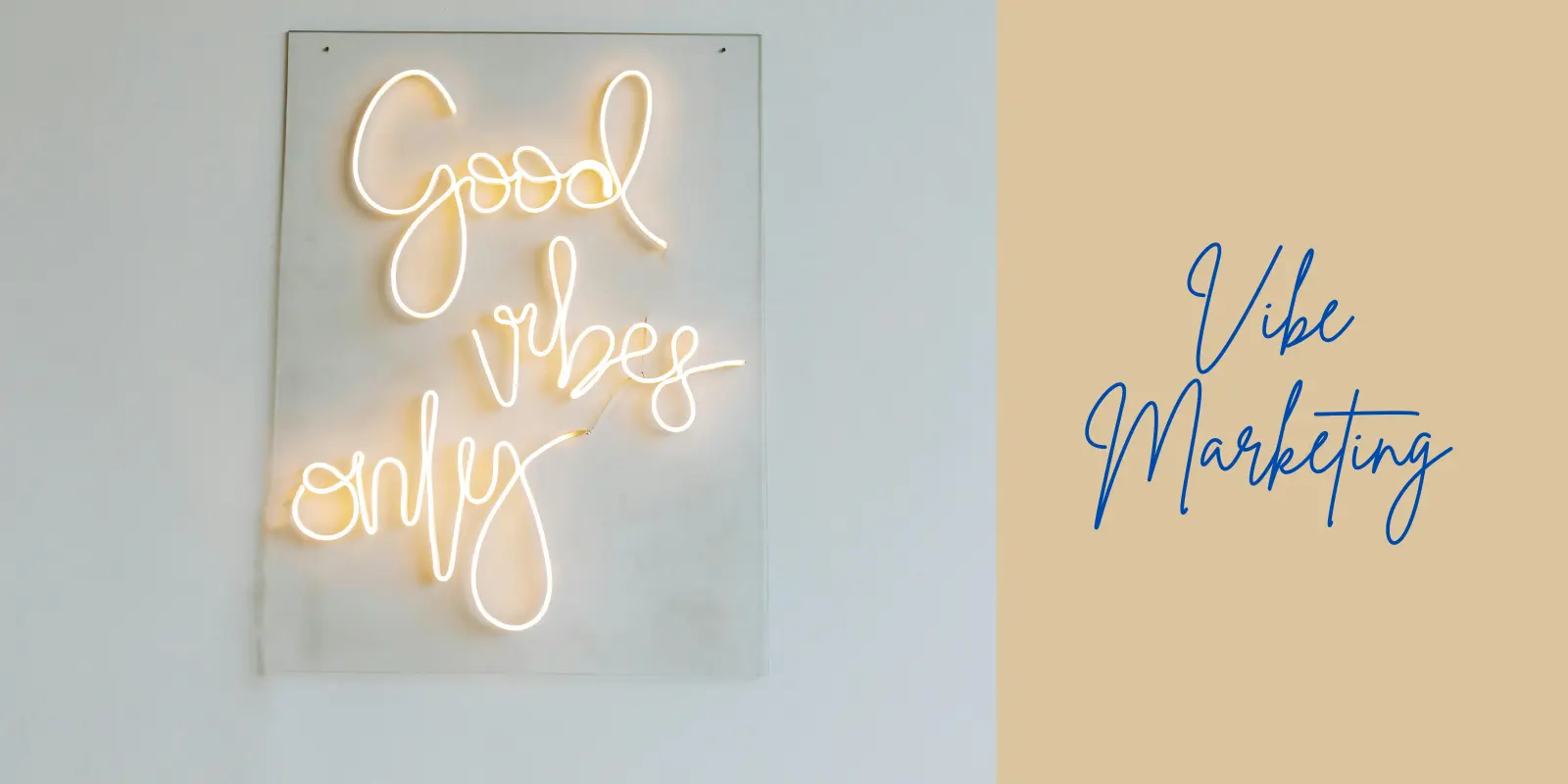Key Takeaways
- Vibe marketing is about emotions, not just products.
- Videos are a powerful tool to communicate a brand’s personality and mood.
- A brand’s identity is strengthened through different word associations.
- Standing out by being different makes a brand more noticeable.
- Playing with words can create curiosity and deeper meaning.
- Brands that evolve over time stay relevant.
- Associating with larger ideas helps build trust and influence.
- Creating a strong brand vibe leads to deeper customer connections
You may have heard of digital marketing, influencer marketing, or content marketing. But have you ever thought about vibe marketing? This is not just another trend; it’s a new way for brands to connect with people. Vibe marketing is about the feeling your brand creates. It’s not just about what you sell but how people experience your brand.
What is Vibe Marketing?
Vibe marketing is about building a strong emotional connection with people. Instead of focusing only on products or services, brands using vibe marketing focus on the energy, atmosphere, and personality they project. It is the difference between a store that simply sells clothes and a brand that makes you feel stylish, confident, and part of a trend.
This approach is not just about visuals or catchy slogans. It goes deeper. It’s about making people feel something before they even buy your product. Think about how some brands make you feel nostalgic, rebellious, or exclusive just from their social media presence.
The Power of Video in Vibe Marketing
One of the most effective ways to create a strong brand vibe is through video content. Unlike text or static images, videos engage multiple senses—sight, sound, and even emotion. A well-crafted video can instantly set the mood for your brand and communicate its essence without saying a word.
Videos help:
- Tell a Story Visually: A video can convey emotions and messages that text alone cannot. Whether it’s behind-the-scenes footage, customer testimonials, or Corporate brand storytelling, videos make the experience more immersive.
- Create Lasting Impressions: People remember visuals and sound better than plain text. A well-produced video sticks in the viewer’s mind and helps build a stronger emotional connection.
- Engage More Effectively: With short attention spans, video is one of the best ways to grab attention instantly. Social media algorithms also favor video content, making it easier to reach larger audiences.
- Showcase Brand Personality: Whether your brand is fun, elegant, rebellious, or comforting, video can bring that personality to life through music, colors, and storytelling techniques.
Why is Vibe Marketing the Future of Branding?
Most marketers will tell you that vibe marketing works because it creates emotional connections. But let’s explore some less obvious reasons why it is changing branding forever.
1. Creating a Multi-Layered Identity
You don’t just want to be a brand; you want to be an experience, a movement, a lifestyle. Using different words and ideas to describe your brand helps create a strong identity. Think about how Apple is not just about gadgets; it represents innovation, simplicity, and elegance. A brand’s vibe is built by associating itself with multiple similar ideas, reinforcing its presence in people’s minds.
2. Standing Out by Being Different
Sometimes, creating a strong brand vibe is about positioning yourself against the usual. A brand like Tesla is futuristic, sleek, and high-tech. It works so well because it stands apart from traditional, fuel-driven cars. If your brand is different from the competition, embrace that contrast. Being the opposite of what’s expected can make you more noticeable.
3. Playing with Words to Build Curiosity
Some words have more than one meaning, and smart brands use this to their advantage. Take “Nike” as an example. It’s not just a shoe brand; it also refers to the Greek goddess of victory. When brands use words with multiple meanings, they add depth to their identity. Imagine a coffee shop named “Grounded” — it can mean both coffee grounds and feeling calm or connected.
4. Creating a Brand That Evolves with Time
Some words change meaning over time, and a brand that allows itself to grow will always stay relevant. For example, “Google” started as just a search engine. Now, it means searching, innovation, cloud services, and much more. Vibe marketing allows a brand to evolve beyond its original meaning, making it flexible for the future.
5. Using Association to Build Influence
Some words remind us of bigger ideas. In vibe marketing, this helps in building trust. For example, when you hear “Hollywood,” you think of movies and glamour. Brands can use this by linking themselves to certain lifestyles. A luxury watch brand doesn’t sell watches; it sells status. A fitness brand doesn’t sell workouts; it sells discipline and transformation.
How You Can Use Vibe Marketing for Your Brand
Now that you know the deeper aspects of vibe marketing, how can you use it? Here are a few steps:
- Define Your Core Vibe: Is your brand about adventure, elegance, rebellion, or calmness? Identify the feeling you want to create.
- Create Content That Matches Your Vibe: Use music, colors, and words that reinforce your brand’s energy.
- Use Video to Strengthen Your Brand’s Vibe: Leverage video marketing to make your brand’s essence more immersive and relatable.
- Build Emotional Triggers: Make people feel something when they see your brand, whether it’s nostalgia, excitement, or ambition.
- Use the Power of Association: Link your brand with other established ideas, values, or symbols to create a stronger impact.
Final Thoughts
Vibe marketing is not just a passing trend; it’s the future of branding. It makes a brand feel alive, emotional, and connected. By using the power of words and associations, you can shape how people feel about your brand, not just what they think of it. Videos, in particular, amplify a brand’s vibe, making it more engaging and memorable. If you want to create a lasting impact, it’s time to stop just marketing a product—and start marketing a vibe.
